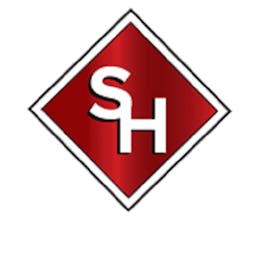
Scarinci Hollenbeck, LLC
The Firm
201-896-4100 info@sh-law.comAuthor: Scarinci Hollenbeck, LLC|January 27, 2022
On December 17, 2021, the U.S. Environmental Protection Agency (EPA) announced a $1 billion investment from the Bipartisan Infrastructure Law to initiate clean-up and clear the backlog of 49 previously unfunded Superfund sites and accelerate cleanup at dozens of other sites across the country. Seven Superfund sites in New Jersey will receive funding.
“This funding will be transformational for New Jersey communities impacted by toxic contamination and will provide critical investments in communities of color and low-income communities, which are disproportionately affected by legacy contamination from abandoned Superfund sites,” Sen. Bob Menendez said in a press statement.
The Comprehensive Environmental Response, Compensation and Liability Act (CERCLA), also commonly known as Superfund, was enacted by Congress on December 11, 1980. CERCLA established prohibitions and requirements concerning closed and abandoned hazardous waste sites and provided for liability of persons responsible for releases of hazardous waste at these sites.
When no viable responsible party is found or cannot afford the cleanup, funds appropriated by Congress can be used. A tax on chemical and petroleum industries provided funds to the Superfund Trust fund for Superfund cleanups up until 1995. The Bipartisan Infrastructure Law reinstates the chemical excise taxes and invests an additional $3.5 billion in environmental remediation at Superfund sites.
CERCLA also requires the EPA to maintain a list of areas of the country with the most severe environmental contamination in need of remediation. The National Priorities List (NPL) is the list of sites of national priority among the known releases or threatened releases of hazardous substances, pollutants, or contaminants throughout the United States and its territories. New Jersey leads the country with 114 Superfund sites.
The following New Jersey Superfund Sites are slated to receive Bipartisan Infrastructure Law funding:
According to the EPA, it is finalizing cleanup plans and preparing funding mechanisms to get construction work started as soon as possible. More information about funding for backlogged sites and accelerated cleanup sites will be available in the coming weeks.
If you have any questions or if you would like to discuss your potential eligibility for this program, please contact me, Monica Schroeck, or the Scarinci Hollenbeck attorney with whom you work, at 201-896-4100.

The Firm
201-896-4100 info@sh-law.com
On December 17, 2021, the U.S. Environmental Protection Agency (EPA) announced a $1 billion investment from the Bipartisan Infrastructure Law to initiate clean-up and clear the backlog of 49 previously unfunded Superfund sites and accelerate cleanup at dozens of other sites across the country. Seven Superfund sites in New Jersey will receive funding.
“This funding will be transformational for New Jersey communities impacted by toxic contamination and will provide critical investments in communities of color and low-income communities, which are disproportionately affected by legacy contamination from abandoned Superfund sites,” Sen. Bob Menendez said in a press statement.
The Comprehensive Environmental Response, Compensation and Liability Act (CERCLA), also commonly known as Superfund, was enacted by Congress on December 11, 1980. CERCLA established prohibitions and requirements concerning closed and abandoned hazardous waste sites and provided for liability of persons responsible for releases of hazardous waste at these sites.
When no viable responsible party is found or cannot afford the cleanup, funds appropriated by Congress can be used. A tax on chemical and petroleum industries provided funds to the Superfund Trust fund for Superfund cleanups up until 1995. The Bipartisan Infrastructure Law reinstates the chemical excise taxes and invests an additional $3.5 billion in environmental remediation at Superfund sites.
CERCLA also requires the EPA to maintain a list of areas of the country with the most severe environmental contamination in need of remediation. The National Priorities List (NPL) is the list of sites of national priority among the known releases or threatened releases of hazardous substances, pollutants, or contaminants throughout the United States and its territories. New Jersey leads the country with 114 Superfund sites.
The following New Jersey Superfund Sites are slated to receive Bipartisan Infrastructure Law funding:
According to the EPA, it is finalizing cleanup plans and preparing funding mechanisms to get construction work started as soon as possible. More information about funding for backlogged sites and accelerated cleanup sites will be available in the coming weeks.
If you have any questions or if you would like to discuss your potential eligibility for this program, please contact me, Monica Schroeck, or the Scarinci Hollenbeck attorney with whom you work, at 201-896-4100.